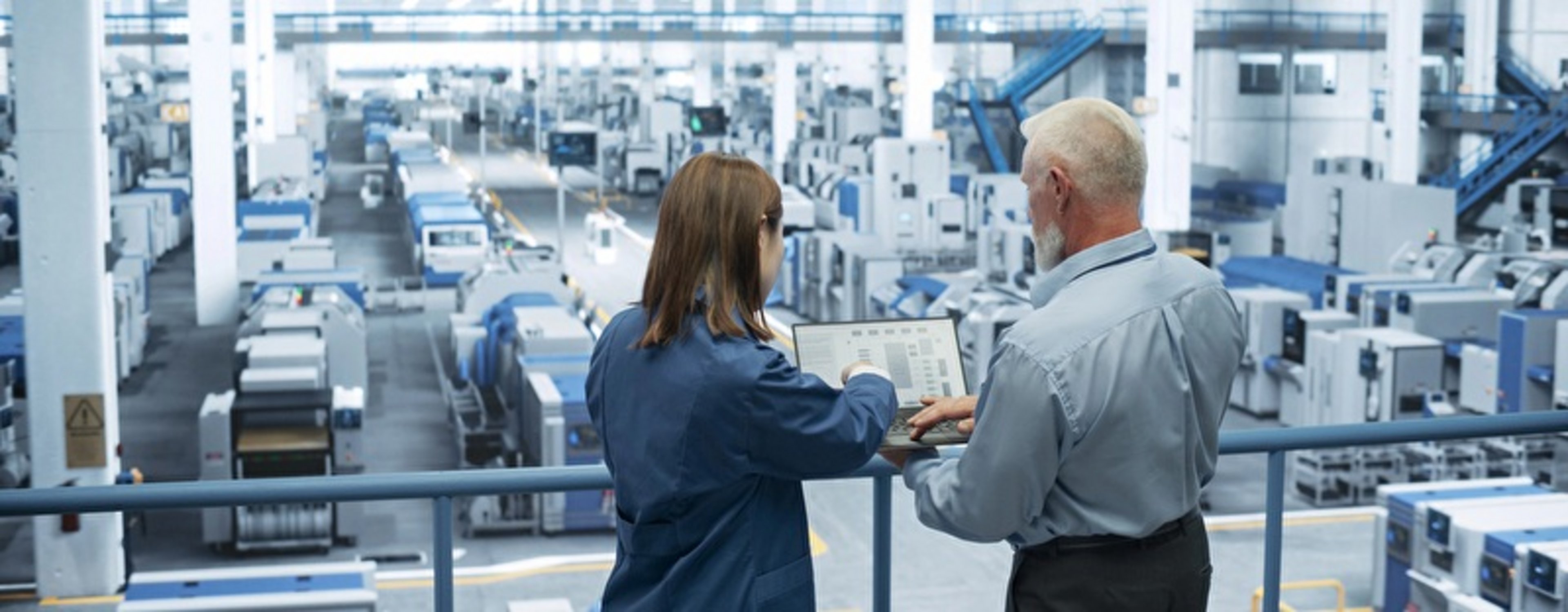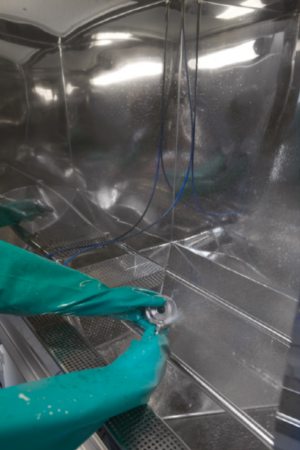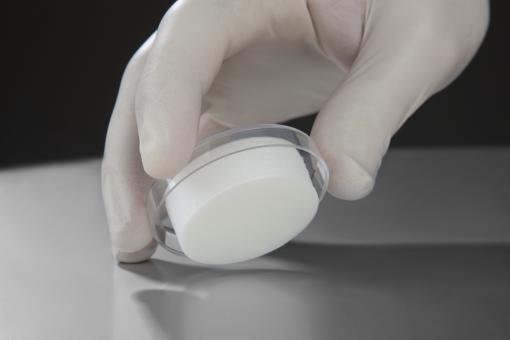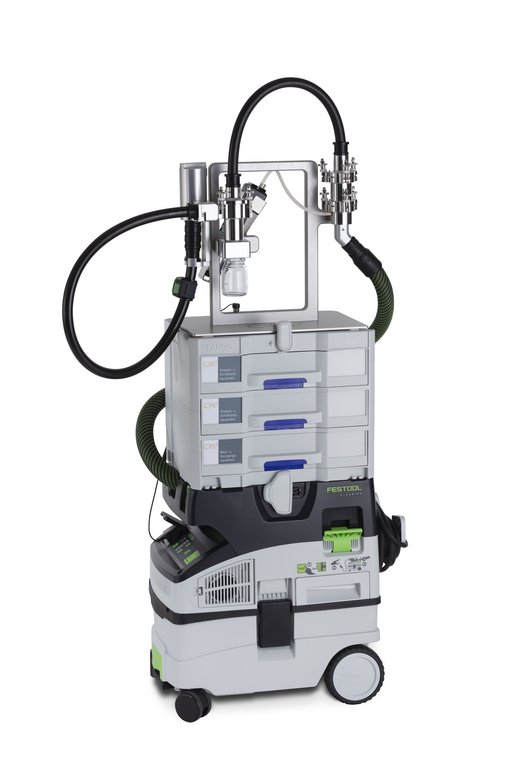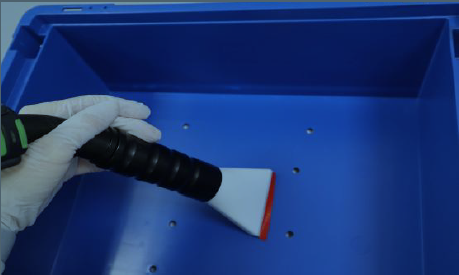KLT monitoring in technical cleanliness
The topic
Here are three ways to effectively monitor load carriers and achieve technical cleanliness. At the end you can get an idea of which method is suitable for you.
In this article, we want to show you three solutions that can be used to effectively monitor load carriers in order to achieve a consistently high level of technical cleanliness beyond pure component cleanliness, including in logistics. At the end of this article, you will be able to see for yourself which method is most suitable for you, where the sweet spots are in terms of inspection frequency and costs, and which application is best suited to your employees.
With the development of ever more powerful and efficient engines, technical cleanliness has become increasingly important in automotive manufacturing. The recent shift towards e-mobility in particular has driven this issue further, making technical cleanliness a key part of modern automotive components. In view of ever stricter limits, logistics is also becoming a crucial process in which cleanliness can no longer be ignored.
Cardboard boxes and wooden pallets are increasingly giving way to KLTs and specially manufactured trays in order to get components to their destination as safely and cleanly as possible. Regular monitoring of this transport packaging is essential to ensure the quality of a production process.
At CleanControlling, we are regularly asked how the cleanliness of KLTs can be checked. This article is intended to provide an overview of the various methods and options and highlight their advantages and disadvantages.
Wet extraction
The classic way to evaluate KLTs, as with all automotive components, is wet extraction in an extraction cabinet.
By selecting suitable extraction media, even oil-containing load carriers can be efficiently cleaned and extracted. Alternative The use of water-based media can also protect the material of the load carrier. However, wet extraction also has some disadvantages. It requires special equipment in the form of an extraction cabinet with a corresponding media supply and specially trained personnel. For this reason, wet extraction cabinets are never used near the production lines. Instead, the load carriers must be taken from the logistics chain to a laboratory for testing.
Another risk of wet extraction is that non-relevant areas are also extracted. The outer surfaces or floors of KLTs are often less critical than the interior, which is in direct contact with the components. These factors mean that wet extractions tend to be carried out infrequently and on a random basis. The high acquisition costs of the required equipment justify these infrequent and random analyses in very few cases. As a result, tests are only carried out very rarely and efficient monitoring can hardly be established.
Advantage: Full-surface sampling
Disadvantage: high costs, low testing frequency
Use of particle stamps
One way of avoiding the disadvantages of wet extraction (high costs, low testing frequency) is to use particle stamps.
Particle stamps are an efficient method of removing particulate contaminants locally from a surface and analyzing them under a microscope. The application is simple and can be carried out by workers in production themselves. This enables a high inspection frequency and significantly close monitoring at low cost. One disadvantage is certainly the only partial testing that is possible with particle stamps. It is possible to stamp up to four different areas with a single particle stamp.
With a stamp area of approx. 13 cm², an area of approx. 52 cm² can be tested with one stamp. An integral inspection of load carriers is therefore not possible. Nevertheless, defined test areas (corners, edges, defined points on the flat surfaces) can be specified. If the sampling is always the same, the high inspection frequency still provides a good picture of the cleanliness of the load carriers over time.
Adhesive pads and particle rockers are an alternative for sampling larger areas. These pads have a surface area of approx. 100 cm² square centimeters and thus allow large areas to be sampled quickly and efficiently and evaluated microscopically. Nevertheless, corners and edges in particular remain difficult to access.
Advantage: Inexpensive method, high test frequency possible
Disadvantage: no full-surface sampling possible
Suction extraction
A third option for sampling load carriers is suction extraction. Suction extraction combines the advantages of quick and easy sampling on site, as is possible with particle stamps.
As the corresponding suction systems are compact and mobile, they can be used directly on the line. Due to the local suction effect, only the areas that really need to be extracted are extracted. This prevents test liquid from overflowing onto irrelevant areas. Suction extraction is therefore a fast and efficient alternative to wet extraction and punch extraction.
Extraction can be carried out over the entire surface or locally. This makes it possible to sample a large number of load carriers in a very short time or at regular intervals and thus obtain a comprehensive picture of the cleanliness of the load carriers in the logistics process. One problem with suction extraction is inherent in the dry extraction process. As no liquid extraction medium is used, the particles are not fixed to the analysis filter by a liquid film. Accordingly, loss-free filter handling requires practice and routine. If a particle trap is used instead of a conventional analysis filter, handling is significantly simplified for the operator, as the particles are fixed directly to the adhesive pad. This ensures safe and loss-free transportation to the microscope.
An extension of this method is the use of app-supported systems, which enable the evaluation of analysis results without a microscope and can therefore further reduce the costs of analysis, shorten the analysis time and thus increase the frequency of testing.
Advantage: high test frequency due to sampling close to the line, local and partial sampling possible
Disadvantage: handling of dry filters requires practice
Newsletter registration

